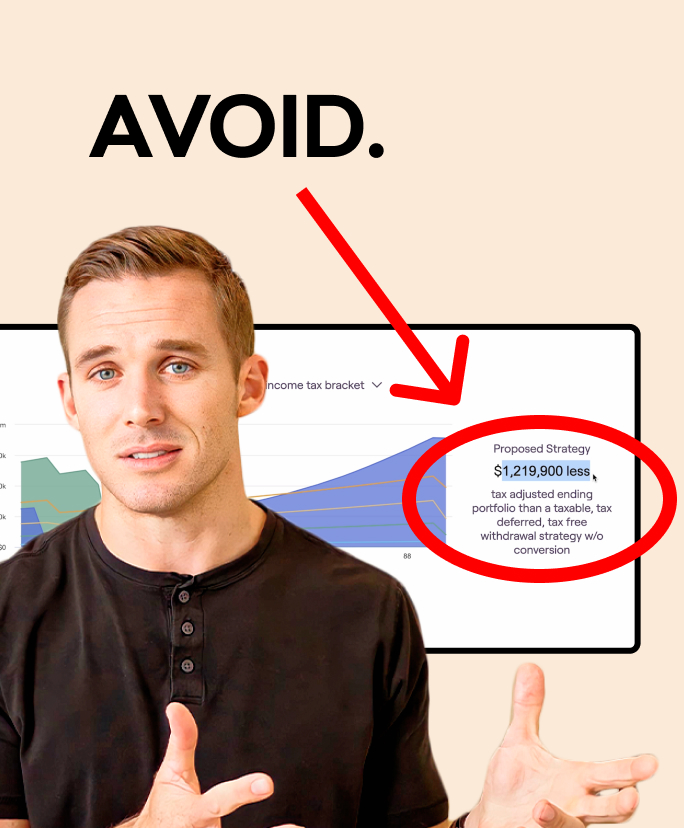As you step into retirement, one of the most pressing concerns for many is how to make their income last while minimizing taxes. It’s natural to want to protect what you’ve worked hard to build, but how you balance tax efficiency with enjoying your retirement years is key. In a recent discussion, I sat down with Alex and Jeanette, a recently retired couple, to explore strategies that can save hundreds of thousands of dollars in taxes during retirement. However, while some strategies can lead to significant tax savings, they can also have unintended consequences.
This post will guide you through understanding tax efficiency, recognizing potential pitfalls, and ultimately, how to strike the right balance between tax planning and maximizing your retirement lifestyle.
The Journey Begins: Retirement and the Tax Challenge
When I spoke with Alex and Jeanette, they were fresh into their retirement. Alex had spent his career in aerospace engineering, with a final role in program management, while Jeanette worked for 35 years in the medical field. After successful careers and diligent savings, they were well-prepared for retirement, but like many retirees, their attention had shifted to managing their income and taxes in this new phase of life.
“Expenses and taxes,” Alex noted, “are our biggest concerns now. I want to make sure our income lasts and that we’re tax-efficient.” It’s a sentiment shared by many retirees. You’ve built up a nest egg, but ensuring that nest egg lasts—without it being eroded by taxes—is crucial. Tax efficiency is a noble goal, and as Alex put it, “I always aim to be tax-free, but that might not be realistic.”
Jeanette added, “Having peace of mind that we won’t face a huge tax expense down the line is a big priority for us.” And peace of mind is exactly what good tax planning should provide.
The Roth Conversion Dilemma
One of the first strategies many retirees explore is converting traditional IRA funds to a Roth IRA. The appeal is clear: Roth IRAs grow tax-free, and distributions in retirement are not taxed. However, the conversion process requires paying taxes upfront on the amounts converted, which can result in a hefty tax bill in the year of conversion.
In Alex and Jeanette’s case, they had already felt the sting of a significant tax bill from an earlier Roth conversion. While the long-term benefits were evident, the immediate tax hit was painful. So, we revisited their numbers to explore whether continuing with Roth conversions made sense.
As we examined their projected taxable income throughout retirement, a pattern emerged. Taxes would increase significantly over time as their various income streams kicked in—first, their pensions, followed by social security, and then annuities. Finally, when required minimum distributions (RMDs) from their traditional IRAs began, their taxable income would rise even further.
Lowering Future Taxes with Strategic Conversions
This is where the power of planning comes into play. By looking ahead, we can strategically manage taxes by converting IRA funds to a Roth IRA during years when Alex and Jeanette are in lower tax brackets. For example, converting up to the 12% tax bracket now could potentially save them $414,000 in taxes over the course of their retirement. Taking it a step further, converting up to the 22% tax bracket might save them as much as $1.3 million in tax-adjusted assets.
The concept is straightforward: pay taxes now at a lower rate to avoid paying taxes later at a higher rate when RMDs force you to take out more income than you need, pushing you into a higher tax bracket.
But while these savings are substantial, they raise a critical question: Is the goal of retirement planning to optimize for tax savings, or is it to optimize for a fulfilling and enjoyable retirement?
The Pitfall of Focusing Solely on Tax Efficiency
In many cases, retirees fall into the trap of focusing solely on tax efficiency. They see the numbers—like the potential $1.3 million in savings—and think it’s a no-brainer. However, when tax savings become the sole objective, it can limit your ability to enjoy retirement to its fullest. As I explained to Alex and Jeanette, “If your primary goal is saving on taxes, that’s fine—but you may find yourself at age 90 with a sizable estate and regrets about not spending more to enjoy your life and help your family while you could.”
Imagine this: What if you increased your spending from $36,000 per year to $100,000 per year? Yes, your tax savings might decrease, but you could create priceless memories by helping your children, enjoying a second home, traveling, or contributing more to causes you care about.
When asked if they could find ways to spend more in retirement, Jeanette immediately thought of helping her children with cars and education, while Alex dreamt of buying a second home by the beach. These aren’t just frivolous expenses—they are investments in family, lifestyle, and the fulfillment that comes with using your wealth to create meaningful experiences.
The Right Balance: Start with Your Life, Then Plan for Taxes
The real key to retirement planning is ensuring your financial strategies support your lifestyle goals, not the other way around. Start by asking yourself what kind of life you want to lead in retirement. Once you’ve defined that vision, you can implement the tax and investment strategies that support it.
If your goal is to leave a substantial legacy for your heirs or charity, maximizing tax savings might make sense. But if your goal is to live your best retirement, don’t let tax strategies dictate how much joy or impact you can create along the way.
For Alex and Jeanette, the takeaway was clear: focus first on what they want their retirement to look like—helping their children, traveling, or enjoying a second home—then optimize the tax strategy around that vision. Yes, implementing Roth conversions or other tax-saving strategies is still essential, but only after defining the lifestyle they want to enjoy.
Optimize for Life, Not Just Taxes
Retirement is your time to enjoy the fruits of decades of hard work. While tax efficiency is important, it should always serve the larger purpose of supporting the life you want to live. By balancing tax strategies with your personal goals, you can create a retirement that isn’t just financially sound but also deeply fulfilling.
So, as you consider your own retirement planning, ask yourself: What do I want my retirement to look like? Once you know the answer, you can implement strategies that will help you get there—both financially and personally.


